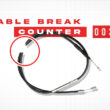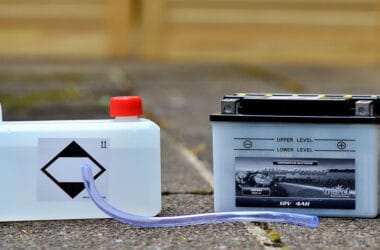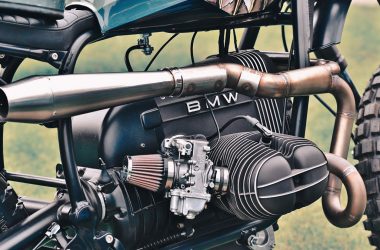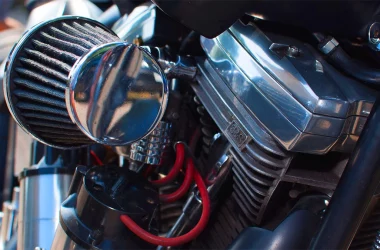Table of Contents Show
Motorcycles not starting after leaving them in rain for a prolonged period of time is a common issue. But this problem occurs only in a certain type of motorcycle. Why motorcycles left in rain won’t start?
Motorcycles won’t start after leaving them in the rain because of water entering the electrical system which is a key component for starting a motorcycle. Water can also get into the fuel tank & carburetor, which can cause the fuel and air to mix with water resulting in failed combustion inside the combustion chamber.
In this article, we will learn about why motorcycles won’t start after leaving them in rain, the reasons behind it, and how to fix this problem.
Keep in mind that this problem majority of the time occurs only in old carbureted & fuel-injected motorcycles where the insulation is not good and water can reach the wiring and various connectors/terminals of the motorcycle.
Reasons Why Motorcycles Won’t Start After Being In Rain
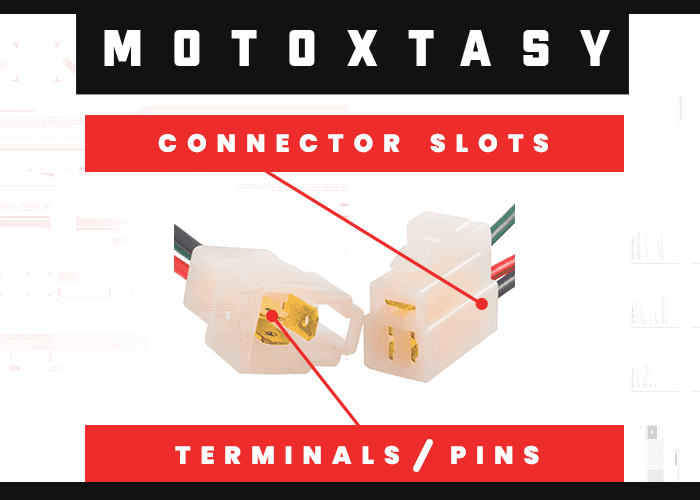
There are multiple reasons why motorcycles won’t start after being in rain, but all these reasons point toward three major components which help to start the motorcycle.
Water should not enter into these components as it will cause probable damage or dysfunction to it.
The three major components are the carburetor, fuel tank/fuel in the tank, and the electrical system which consists/related to an ignition system, charging system & starting system.
And water can also enter into the connector slots and around the terminals of the motorcycle.
Again, remember modern motorcycles don’t face this particular type of problem as they have far superior insulation of wires and connectors compared to the old carbureted & fuel injected motorcycles where water can seep through small nooks and creeks and can potentially damage the parts which help the motorcycle to start.
Reason 1: Water Entering Into The Electrical System
The ignition system is a separate but related part of an electrical system, which also consists of starting and charging system.
So, water coming in contact with parts such as Battery terminals, pickup coils, Spark plugs/spark plug wires, and spark plug cap, which might have cracks on them will cause the disruption of the electrical current which is needed to start the motorcycle.
Look out for water around the CDI box’s connector slot ( Capacitor Discharge Ignition ) which controls your motorcycle’s ignition system. It typically consists of a charging circuit, main capacitor, triggering circuit & small transformer.
Because of poor insulation around the handlebar switches/button and ignition keyhole on old motorcycles, water can also come in contact with a few terminals & connector slots which are placed behind the headlights.
How To Fix: Watering Entering Into The Electrical System
First, look out for water in the connector slots/terminals which are behind the headlights. Clean it with a dry soft cloth or compressed air gun and get it completely dry.
If the motorcycle still doesn’t start replace your wire connectors with new ones.
Also, check for cracks on the spark plug wire/coil, also called the ignition coil. You know that an ignition coil is needed to create an electric spark in the spark plugs to ignite the fuel.
Any kind of disruption caused to the flow of electric current, especially by water getting past the insulation through cracks on the coil will not let your motorcycle start. So if you find any visible cracks on the wire replace it with the new one.
Broken or high wear and tear of spark plug cap with water in it will also contribute to the disruption of current flow. Trying to start a motorcycle multiple times in this situation may damage the spark plug.
Pickup coils may also come into contact with rainwater which may cause the coils to short circuit, creating a no spark state ( disruption of current flow ). Replace the coils with new ones if they are short-circuited.
Worn out riding seat with cracks on the bottom or sides will let the water enter into the CDI box’s connector slots. Clean it with a soft cotton cloth which will absorb any water that remains inside it and let it dry naturally or use a compressed air gun.
If the motorcycle fails to start, replace it with a new connector if you can, or you might have to buy a new CDI box/unit.
Reason 2: Water Entering Into The Carburetor
If the water enters the carburetor, you won’t be able to start as the carburetor mixes air and fuel for an IC ( Internal Combustion ) engine.
So water entering into the mix of air and fuel is not a good idea to successfully start the motorcycle.
Along with the carburetor, your filter might get wet too.
The filter might be of any type, paper pleat air filter, cotton gauze air filter,
foam air filter. Find out what you have in your motorcycle.
We have already written an article about what happens if the air filter gets wet and how to fix it.
How To Fix: Water Entering Into The Carburetor
To clean your motorcycle’s carburetor, you should first have the necessary tools and products in your access.
If you can’t do it yourself, then take it to the trusted garage or refer to the user’s manual.
You will need a motorcycle tool kit or at least some flat & Phillips head screwdrivers.
Also, have an aerosol solvent and a compressed air gun along with a soft-bristled small brush and a short thin wire which can go through the jets of the carburetor.
Now detach the piston plunger and flow bowl which is located at the bottom of the carburetor.
If you find the dirt and gunk inside the flow bowl, then clean it with aerosol solvent and brush the dirt out of it.
Remove the float bowl hinge pin to detach the float and check for any kind of wear on the float needle.
If you find any kind of wear on the needle ring, replace it right then and there.
Now, remove the main and pilot jet and check for any clog inside the jets.
Spray an adequate amount of solvent through it to unclog the jets or let the jets sit in the solvent for a few minutes.
You can also use a compressed air gun after the solvent is sprayed or a short thin wire to unclog it.
Don’t be rough or hard with the wire while unclogging the jets.
Also, don’t forget to clean the needle jet following the same procedure mentioned above.
Remove the mixer screw and note down how many turns it takes to unscrew it, so it will help you when putting the screw back on with the right amount of turns/pressure.
Once everything is disassembled, clean all the holes and passageways with aerosol solvent and follow up with the compressed air gun.
Now, once everything is clean and dry, reassemble the carburetor.
And that’s how you take the water out of the carburetor and clean it thoroughly.
Reason 3: Water Entering Into The Fuel Tank
Once the water enters the fuel tank, combustion cannot take place because of water is not flammable.
And again a mixture of water fuel and the air is not an optimal combination that is required to start a motorcycle.
How To Fix: Water Entering Into The Fuel Tank
Most old motorcycles don’t have a cap/cover over their fuel/gas tank cap’s keyhole. So water can get inside through the keyhole’s portion.
To fix this problem you can buy a new fuel tank cap with a keyhole cover to avoid water getting into the fuel tank.
If the water is already inside the fuel tank, then the best way to tackle this problem is by removing the fuel tank and emptying it.
Let it dry, then put the fuel tank back onto the motorcycle and refill it with fresh fuel.
You can always refer to the user’s manual if you want to do it by yourself or take it to the trusted garage/ motorcycle repair shop.
So these are the most common reasons why motorcycles won’t start after leaving them in rain.
What Kind Of Motorcycles Won’t Start After Leaving In Rain
Old motorcycles (carbureted and fuel-injected) had too many gaps and the water could enter through buttons/ switches of the handlebar and through keyholes too.
The wiring in these old motorcycles was not up to the mark as compared to today’s standards.
From the wires and their quality to the connector slots/switches were not properly insulated.
So water could enter into these slots of connectors, which would disrupt the electrical flow of current ultimately leading to the motorcycles not starting after being in rain for a long period of time.
Modern motorcycles on the other hand are not affected by rain, but it doesn’t mean you can keep your bike in the rain all day long.
As the motorcycle’s paint and coating (chrome or paint) are water-resistant, if it is exposed to water for a longer duration it can cause rusting.
In modern motorcycles, you won’t see subpar ( below an average level ) wire and connectors management and insulation.
Even the keyhole area of the fuel tank and ignition key didn’t have a quality slider (which will slide off and close the keyhole area after taking off the key) and was not available in most of the motorcycles or used to get damaged easily.
So keep in mind that old motorcycles can be affected if kept in rain for a longer time, but modern carbureted bikes don’t have major problems like the old ones had.
Does Leaving Motorcycle In The Rain Cause Any Kind Of Damage
Leaving a motorcycle in the rain once in a while is fine, but if you keep your motorcycle outside during monsoon season all the time is not a good idea.
Apart from the reasons and potential damage to mechanical & electrical parts of the motorcycle which we have mentioned earlier, the formation of rust is a major consequence which can be caused by rain.
As all the motorcycles have a coating that won’t allow water or atmosphere to rust the motorcycle.
But even the coating wears off if it is wet frequently for a long time.
The best example is to keep a high-quality fuel tank submerged in water, after some time it will surely start to rust.
No matter how superior paint or coating you have applied, parts that are highly exposed to water will get rusted easily.
That’s why motorcycle chain gets rusted in the rainy season if it’s not properly lubricated & cleaned accordingly.
In simple words, motorcycle parts that are closer to the road are highly susceptible to getting wet and dirty, which in turn will have higher chances of getting rusted.
How To Prevent Damages To The Motorcycle Caused By Rain
It’s pretty simple and many of you have guessed it.
Keep the motorcycle in the shed, or a four side covered garage.
Another option is to cover it with a high-quality /motorcycle/bike cover that won’t allow the water to pass through it.
The downside to this is in some weather conditions, the moisture is contained inside the cover which will age the motorcycle quicker.
So keep a cleaning routine to combat this problem.
Conclusion
All the motorcycles are designed to go in the rain, but they are water-resistant not waterproof.
So it is better not to allow water to sit on your motorcycle for a longer period as it will start corrosion, so park your vehicle in the shed, covered parking, carport, or any area which shields the motorcycle from rainfall.


